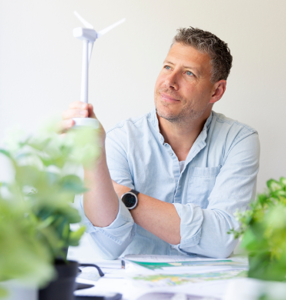Our recent CBI Sustainability webinar discussed the importance of building a business case to drive progress in any organisation. CB Bhattacharya went as far as saying we’re doomed without investing in sustainability. But, on the upside, he pointed to research that shows that sustainability can create additional value for a firm.
It can do this in two ways:
- The direct route: when you cut emissions, you directly cut costs as, for example, you're using less electricity. You're helping both the environment and your bottom line.
- The indirect route: this refers to stakeholders’ reactions to the initiatives that you are taking. If your employees are more energised because of your carpooling initiative, then they will be more energised and productive at work too. This counts towards both top line and bottom-line savings.
And although many firms think of sustainability as a compliance issue, an increasing number are seeing it as a way to reduce risk.
But how do we get everyone on the same page?
In many companies sustainability is viewed as someone else's problem. It's relegated to a single department and often to a single person. That's a roadblock.
But there are powerful examples of what can be achieved where there’s ownership. Like a factory in India in the middle of nowhere, where the employees themselves came up with an idea of how to harvest rainwater in this water stressed area and put it into action.
Ownership is a powerful concept because it’s part of the human condition. We are what we have.
How do you build ownership around sustainability?
CB boiled this down into a three-step process:
- Incubate. The first task is to define the purpose of a company. Purpose is not what you do, which is your mission. It’s not where you want to go – that’s your vision. A purpose is why you do what you do. Why do you sell cars? Is it to make money or is it to provide mobility to people? Either answer has different implications for your workforce. One provides meaning to the workforce and the other doesn't. You must inspire.
- Launch. After you've defined your purpose, you must launch the program to your employees. This is where you have to empower your stakeholders to act sustainably and, in essence, take on a job that they don't have time for! It helps to appeal to their heads, not just their hearts: if you implement this, it's going to be not only be good for the planet, but it's also good for your bottom line. However, their willingness to act is not enough. You have to create the ability, and this requires hard work and investment in training.
- Entrench. This means establishing a routine. Sustainability must become second nature, like turning off the tap when you brush your teeth. Here it’s all about embedding sustainability culture into your organisation. It’s about the constant drumbeat that should intensify at times if there's good news and have a different kind of tone if we are not making enough progress.
We also need to communicate progress and here behavioural apps, like, Ailuna, can be helpful to entrench those behaviours.
CB Bhattacharya is the H.J. Zoffer Chair in Sustainability and Ethics at the Katz Graduate School of Business, University of Pittsburgh and an author of “Small Actions, Big Difference”. He also sits on the board of Ailuna, a member of the CBI's Sustainability Community.
Watch our webinar on the sustainability culture











